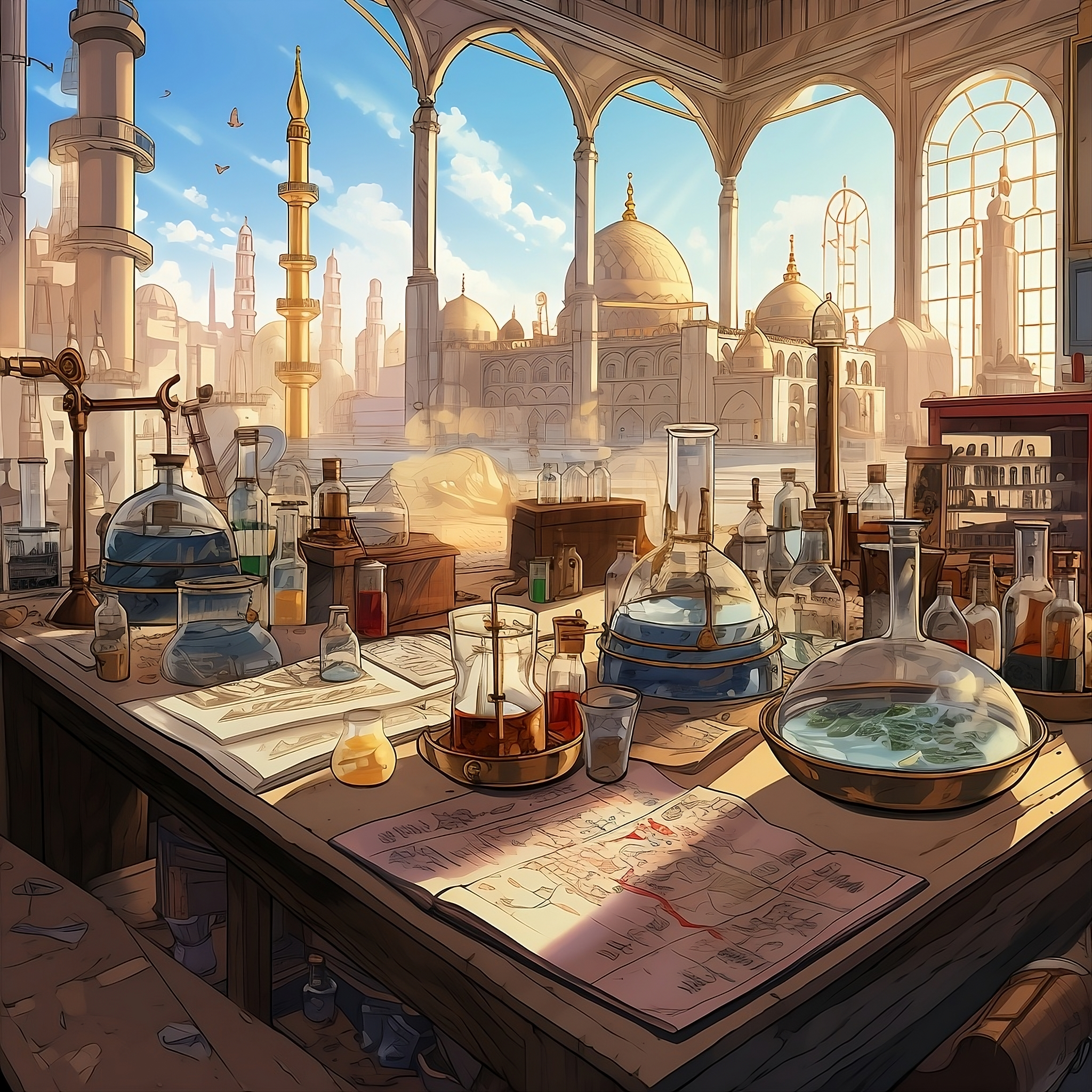
Muslim civilisations flourished in the Islamic Golden Age with respect to scientific, technological, and philosophical advancements because state institutions encouraged creative pursuits, intellectual achievements and invested heavily in research and education. Today, Muslim states and governments must direct their financial resources toward research and education, which can unlock immense potential for scientific, technological, and intellectual output.
The Muslim world was once home to intellectual progress and enlightenment between the 7th-12th centuries. Today, Muslim countries have fallen behind in the domain of research and scientific publications, technological innovations, and educational institutions. The burden can mainly be attributed to Muslim governments and states’ lack of investment in creative and intellectual endeavours. The age of enlightenment, scientific and technological advancement can be rekindled if Muslim states and governments invest their vast financial resources into research, development, and education. The legacy of the city of knowledge, Baghdad, can be rediscovered with the proper allocation of Muslim capital and resources.
The Golden Age
The Islamic Golden Age (7th-12th century) flourished in science, technology, philosophy, and institution because the Abbasid Empire invested heavily in these endeavours. At the behest of educationally motivated leaders, such as Al-Mansur, Al-Ma’mun, and Harun al-Rashid, the city of Baghdad became the international capital of knowledge, research, and enlightenment. State and government investment, encouragement and backing are the core reason behind educational progress in the Golden Age and this spirit must be rediscovered in the Muslim world today.1

Abbasid Caliph Al-Ma’mun ruled Baghdad for twenty-years (813-833), inspiring an age of rationalism in the Muslim world. This was the “pinnacle of the 500-year Islamic Golden Age” according to Eamon Gearon.2 Al-Ma’mun was motivated by Greek logic and rationalism, and he directed this ethos into the educational institutions of Baghdad. This move inspired a generation of Muslim medical experts, scientists, mathematicians, astronomers, and polymaths.3 Therefore the backing of the state and government is always essential for paving the way for educational, scientific, and technological progress.
The European Enlightenment was Inspired by Islamic Golden Age
The Islamic Golden Age did not decline necessarily because of the Mongol invasion of Baghdad in 1258 and the destruction of Bayt al-Hikmah (the House of Wisdom) and the libraries and archives. Although the Mongol invasion served as a trigger for the eventual disintegration of the city of knowledge and the Muslim detachment from enlightenment and intellectual pursuits, this is not entirely an accurate assessment. Jim al-Khalili makes a strong case that there was not really an intellectual decline in the Muslim world after the Mongol ransacking of Baghdad in 1258.4 In fact, Al-Khalili argues that dozens of cities like Baghdad, centres of knowledge, learning and academia had emerged by the 13th and 14th century in North Africa, Spain, Persia, and Central Asia. What seems like a decline of the Golden Age and Muslim intellectual achievements was a diversification of knowledge centres among numerous cities in the Muslim world. Spanning from Nishapur, Delhi, Samarqand, to Constantinople.5

The West experienced an enlightenment on the back of the Islamic Golden Age. Jonathan Lyons argues that Muslim intellectual achievements “transmuted the backward West into a scientific and technological superpower”.6 The West experienced the Dark Ages during this period with respect to scientific discovery, rational pursuits, and technological innovations. The awakening in the West occurred because of the academic legacy of the Islamic Golden Age and especially the endeavours in the city of Baghdad. Caliph Al-Mansur was the mastermind behind the city of knowledge. Al-Mansur was inspired by the great intellectual achievements of the Persian Kings, Greek philosophy, and Indian legacy. Bayt al-Hikmah (the House of Wisdom) was commissioned to translate Persian, Greek and Indian works.7
It is important to recognise the centrality of state encouragement and impetus in research production and educational development. Al-Mansur, al-Ma’mun, and Harun al-Rashid; all these Abbasid statesmen were personally fascinated with scientific discovery, rationality, technology, and academia. Together, they inspired the vast academy and libraries in the House of Wisdom and the legacy of knowledge that emerged in the period between 7th-12th centuries. The first university in recorded history was established in Tunis in 737, al-Zaytunah, and then “Qarawiyyin” by Fatima al-Fihriyyya in Fez in 859.8 To put this into context, the University of Oxford was established in 1096. Bayt al-Hikmah in Baghdad was established in the mid-8th century.
Remarkable Scientific, Technological and Philosophical Contributions
There are certain notable achievements of the Muslim era that later benefitted Europeans and the West. Christopher Columbus learned from Muslim geographical and mathematic models suggesting symmetry in the earth, which inspired “Columbus to sail west”.9 Certain European explorers actually “misread” Abbasid sources on the size of the earth, leading them to believe the earth was actually “20 percent the size it actually is”, encouraging them to sail toward the new world and expecting the journey to be a whole lot shorter.10 With respect to the geography and mapping of the world, King Roger II commissioned Muslim geographer Muhammad al-Idrisi to create the most advanced map of the world in 1154 known as Tabula Rogerina.11

Muslim architecture also inspired Europeans when it comes to the designs of Gothic buildings, Cathedrals and especially the concept of the “pointed arch”.12 Europeans were fascinated by Muslim architects and their “masonry techniques”, their “technical” precision, “drawings”, all of which offered “geometric principles unknown to the West”.13 Even more remarkable was the way Muslim astronomers paved the way for later scientists’ propagation of the “celestial revolution” which sought to arrange the “sun rather than the earth at the centre of the universe”.14 Nicolaus Copernicus advanced this idea in the 16th century.15
Intellectual Breakthroughs and Innovations

The Islamic Golden Age produced many great scientists, philosophers, mathematicians, and intellectuals of high standing. Muhammad ibn Musa al-Khawarizmi (780-850) was among the great mathematicians of this era who developed ideas upon Indian mathematics, adding the “zero” and establishing “al-Jabrah” known as algebra now (alkhateeb 55-56). Ibn Sina (Avicenna) was a great polymath of the Golden Age and responsible for philosophical, medical, and intellectual innovations.
Ibn Sina proved through “clinical observations” that diseases could spread through “air, water and soil”.16 Ibn Sina also argued in his Canon of Medicine that medical drugs could not simply be relied upon based on theory, but they must be examined and tested under “controlled conditions” to ascertain whether they could treat a disease.17 Ibn Sina also spoke about the connection between the mind and physical health. Ibn Sina argued “negative thoughts” could cause physical health issues as much as “toxins, injury or diet”.18 This is also the central view of Hungarian Canadian medical researcher Dr. Gabor Mate in his book When the Body Says No: The Cost of Hidden Stress.19

Ibn al-Haytham (960-1040) challenged Greek tradition which arrived at conclusions via philosophical discussion. Ibn al-Haytham believed “scientific theory can only be achieved through empirical study and extermination”.20 Al-Haytham made significant in-roads in academia, inspiring the enlightenment in the West during the 17th and 18th centuries by solidifying empiricism in the late 10th century.
Ptolemy argued the eye emits light rays which reflect off objects and return back into the eye, allowing you to see. Ibn al-Haytham challenged this through hundreds of clinical experiments, concluding Ptolemy’s theory was “impossible”. Ibn al-Haytham argued that light reflects off objects into the eye, allowing one to see.21 Al-Haytham’s discovery laid the foundation for development of the camera as he “experimented with light coming through a small opening in window shutters which formed an inverted image on the opposite wall.” This led to the technology behind the modern camera.22
Jabir ibn al-Hayyan was responsible for advancements in experimentation, especially in chemical sciences. Al-Hayyan emancipated chemistry from its basis in “superstition” and converted it into an “experimental science”.23 Jabir bin al-Hayyan was a disciple of Imam Ja’afar al-Sadiq RA who himself was a polymath and a specialist in chemistry.24 Furthermore, Ibn al-Nafis explained the “circulation of venous blood which passes into the heart and lungs through ventricles, which becomes oxygenated and arterial blood”.25 These were some notable discoveries of Muslim scientists during the Golden Age that benefitted global academia for centuries to follow.
During the Islamic Golden Age, numerous technologies, machines, and devices were also invented. These include water clocks, chemistry lab equipment, crankshafts, water pumps, eyeglasses, drinking glasses and water-robots. Ismail al-Jazari designed “automatic machines, hand-washing systems, clocks and musical robots which worked on water”.26 This period was remarkable for its philosophical, scientific, technological, and academic achievements.
Firas Alkhateeb argues “the greatest medical minds of all time would not have been able to accomplish great feats without the support of great institutions. The Muslim world of the Golden Ages, with its vast financial resources and strong political institutions, established some of the first hospitals in history.”27 It was the backing and support of the ‘Abbasid Empire and its rulers that enabled the Islamic Golden Age.
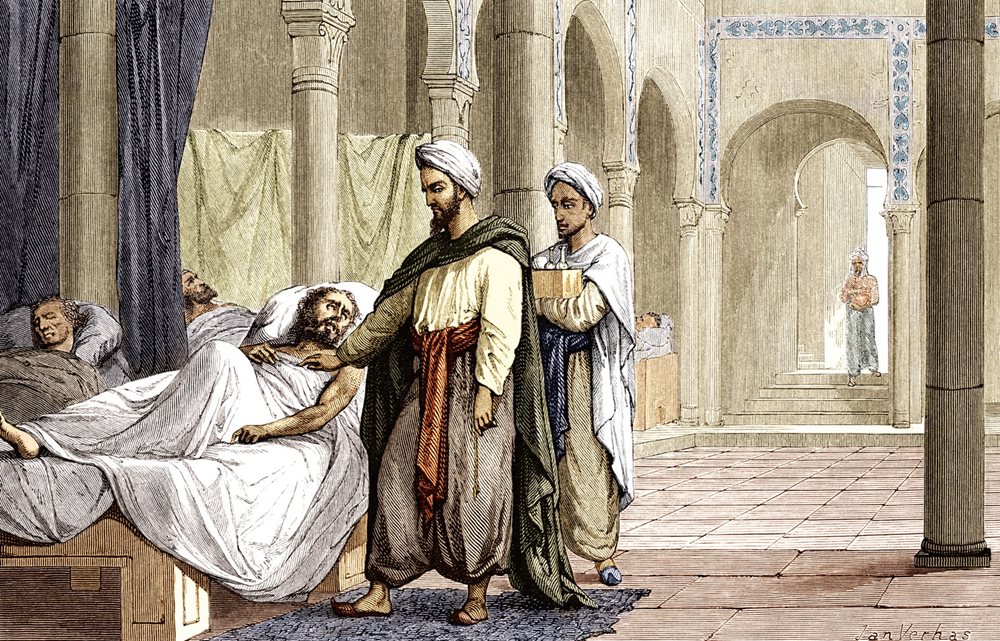
As a result of this spirit of social progress, Baghdad offered free healthcare and hospitals for patients and the poorest of citizens as early as the 9th century. Many contemporary countries in the 21st century still do not offer universal health care, whereas such institutions spread in the “Muslim world, between the 10th and 14th century, in Baghdad, Mecca, Cairo, Damascus, Medina and Granada”.28 For any collective progress to materialise in the Muslim World, the backing of Muslim governments and heads of states is trivial.
The Importance of Investing in Education, Research and Development in the Muslim World Today
Moving forward, Muslim countries today must realise the importance of investing in research and development (R & D) and become intellectual powerhouses like the bygone Golden Age. National progress, whether political, economic, or social, is heavily linked with advanced technology and science. This can only be achieved if Muslim countries direct a larger share of their financial resources toward educational institutions, research, and academic output. The Muslim world must become the global centre of knowledge, enlightenment, scientific discovery, and technological advancement.
Unfortunately, since the late 1990s, Muslim countries on average have only spent about 1 percent of their GDP on research and development, in comparison to developed countries which spent approximately five times more.29 This is both remarkable and shocking for the Muslim world. Once known for being the capital of knowledge and wisdom, Muslim countries have fallen behind the rest of the world. According to data from “UNESCO and the World Bank, twenty countries from the Organisation of Islamic Countries (OIC) spent only 0.34 percent of their total GDP on scientific research between 1996-2003”.30 Whereas this is only “one-seventh in comparison to the global average at 2.36 percent”.31 This is again an astounding figure considering the vast energy wealth OIC countries own.
In 1981, COMSTECH in collaboration with the OIC discovered that Muslim countries only had 10 technicians, engineers, and scientists per 1000 people in comparison to the 40 global average.32 The Royal Society’s Atlas of the Islamic World-Science and Innovation suggests that 17 Arab countries within the OIC produced 13,444 scientific publications in the year 2005, compared to 15,455 produced by Harvard University alone”.33 These figures demonstrate the degree of regression the Muslim world has faced in research and development. The Muslim world must reverse this and strive to invest more of their GDP on education, research, development, technology, and the grassroots. The vision and determination of al-Mansur, al-Ma’mun, and Harun al-Rashid must be replicated today.
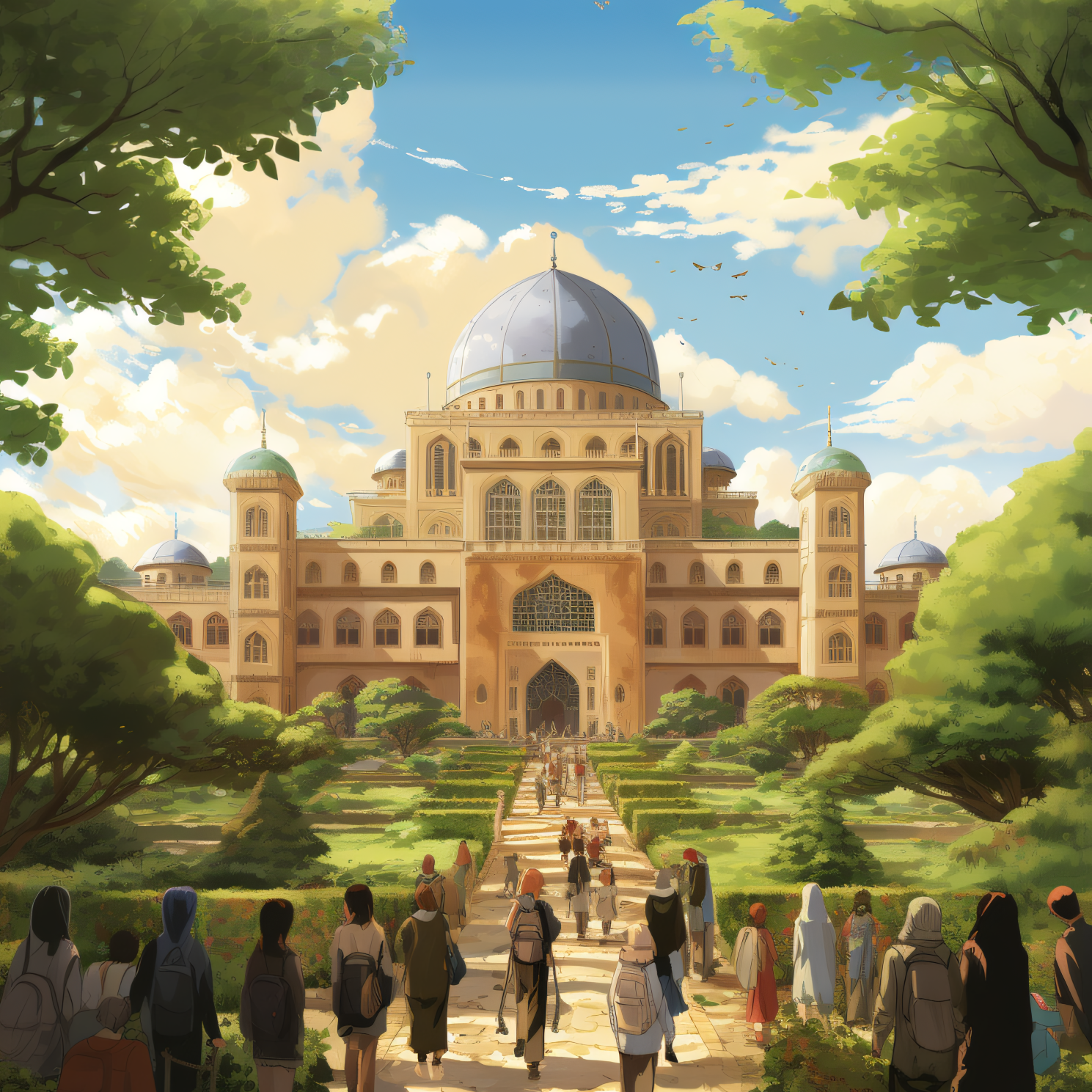
Muslim countries are not spending nearly enough share of their gross domestic product (GDP) and vast wealth on ‘research’, ‘development’, ‘education’, ‘technology’ and ‘science’. Hamdi Khalfaoui and Hassan Guenchi state that “The United Nations Development Programme report (2002) states that Muslim countries are classified as underdeveloped countries characterised by low gross domestic product (GDP), high poverty, high illiteracy, technical and technological backwardness, and an inadequate and ineffective institutional framework where it exists. Except for oil countries, which are not necessarily rich, Muslim countries generally suffer from chronic budget deficits, average life expectancy and low purchasing power”.34 The general underdevelopment of Muslim countries can be reversed by investing a greater share of financial resources on education, as this will improve economic indicators and research output, therefore paving the way for greater technological advancement.
Education Leads to Economic, Social and Political Growth
Agung Suwandaru, Thamer Alghamdi and Nurwanto Nurwanto make a case for this by citing the success of Indonesia: since its government opted to spend 20% of the state budget on education, economic growth has increased.35 They argue that there is a positive relationship between public expenditure on the educational sector and economic growth in Indonesia.36 This is an exemplary case for the Muslim world. In Indonesia, between 2009-2014, education became the second largest subsidised state expense. Whereas in 2015, education became the largest government expenditure. This is a significant landmark precedent for a Muslim country with respect to investing the largest share of its state budget on education.37

Recently, six Muslim countries including Saudi Arabia, Kuwait, Oman, UAE, Bahrain, and Qatar have also witnessed an increase in economic output as a result of an increase in educational expenditure between 1977-2004.38 Investing a greater share of state finances into education certainly results in growth in economic indicators according to these studies. This is the way forward for the Muslim world.
Mehmet Mercan and Sevgi Sezer also make the case that an increase in state expenditure on education has had a positive impact on economic growth in Turkey between 1970-2012.39 For this reason, by 2023, the Turkish government intends to spend 3 percent of its GDP on research and development, equivalent to the value of USD 60 billion.40 Nigeria also intends to spend 0.5% of its GDP on technological innovation in 2023.41 Morocco spends more than 26% of its GDP on education. These Muslim countries are leading the way in investment in education and R & D.42
On the other hand, Muslim countries with vast economic resources and energy wealth are spending not nearly enough on education and R & D. The Gulf Cooperation Council (GCC) countries are spending only approximately 3.3% of their GDP on education which is less than the 4.4% world average.43 For example, Saudi Arabia only spends 5.6% of its GDP on education.44 This is not a reassuring statistic for GCC and Muslim countries.
Scientific Publications and Academic Contributions Must Increase
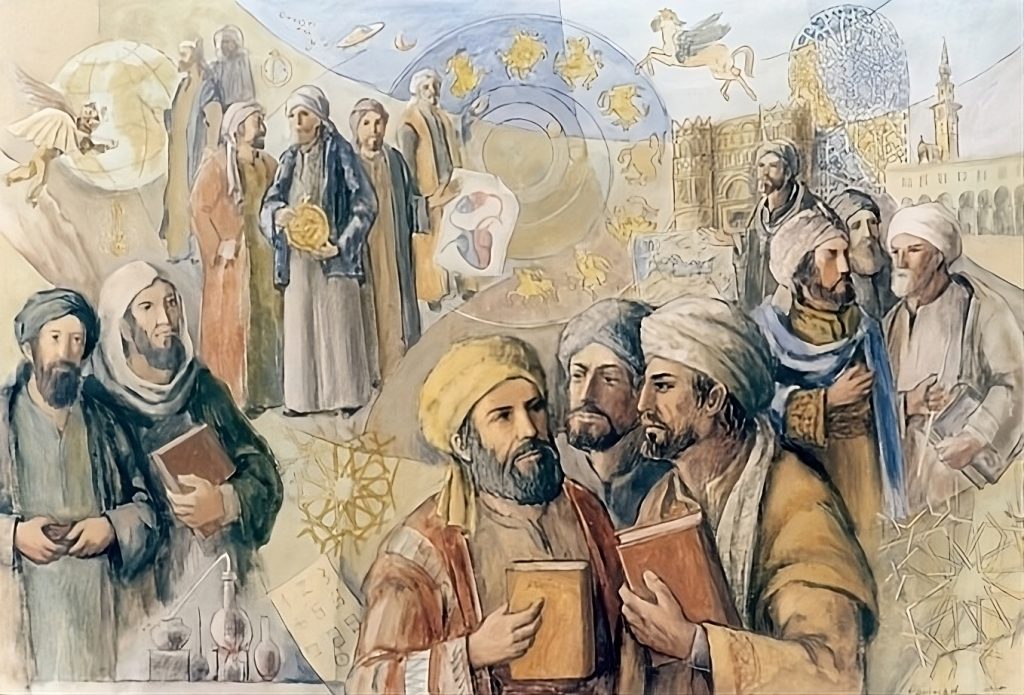
As a result of not investing in education and R & D, Muslim countries are not contributing significantly to scientific literature and publications. Sultan Ayoub Meo states Muslim countries with the highest GDP are not producing research and advancing scientific publications.45 Qatar, Kuwait, and UAE have the highest GDP in the region, but their research output is very low. The wealthy Arab states spend only 0.2% of their GDP on research and development, in contrast to the world average at 1.4%. Similarly, the OIC spends only 0.34% of their GDP on research and development, in contrast to the 2.3% global average in the same period.46 This is remarkable considering the immense share of GDP these OIC and Gulf Cooperation Council (GCC) countries spend on urban structures, travel, tourism, leisure, and defence. Pakistan has spent a miserly 2.38% of its GDP on education in 2021.47 he disparity between the wealth OIC and GCC countries possess and the miserly spending on R & D, education and research output is astonishing.
Ikram ul Haq and Muhammad Tanveer state that there were 3, 946, 933 publications in the year 2018 according to SCImago Journal and Country Rank (SJR).48 There are 57 OIC countries which have produced 8.29% of the world total. Pakistan for example only represents 0.52% of global publications, whereas Iran represents 1.52% and Turkey represents 1.15% of the global average. There are 500 universities ranked among the highest, in which the OIC countries only have 14 universities.49 Apart from some exceptions, these statistics represent a disparity in the Muslim world and the rest of the world in research and development, in scientific journal publications and contribution to knowledge.
Turkey and Iran have displayed better results compared to their neighbouring countries in research output. Turkey’s publications have increased from “500 in 1998 to more than 6000 in 2003. Iran’s publications have increased from 100 a decade ago approximately 2000 now”.50 Saudi Arabia, Egypt, Turkey, and Iran in recent years have increased their research output, and this is a positive sign. In 2022, Turkey produced 51, 484, Iran produced 49, 380, Saudi Arabia produced 45, 324 and Egypt produced 28, 879 research articles.51

The Way Forward
Majid Ursan al-Kilani outlines the way in which the Muslim community in the world can once again “exhibit strength and resilience” by learning from the success of the Golden era.52 The Muslim community can bring about overall “positive change” by expanding the scope of “education” and by doing so will offset “fruitful change in other areas of life.”.53 Al-Kilani argues there were some cornerstones to past Muslim communities that allowed them to progress significantly. This included commitment to basic “Islamic principles”, genuine assessment of “reforms” and their results, awarding important roles to “wise, and enlightened individuals”, “avoiding classism and elitism”, and ensuring “sincere”, “able” and “skilled” individuals are “mobilised” towards positive causes.54 These were the cornerstones of past Muslim communities, and by advancing these principles, the contemporary Muslim world can encourage a new era of educational, technological, and scientific progress.
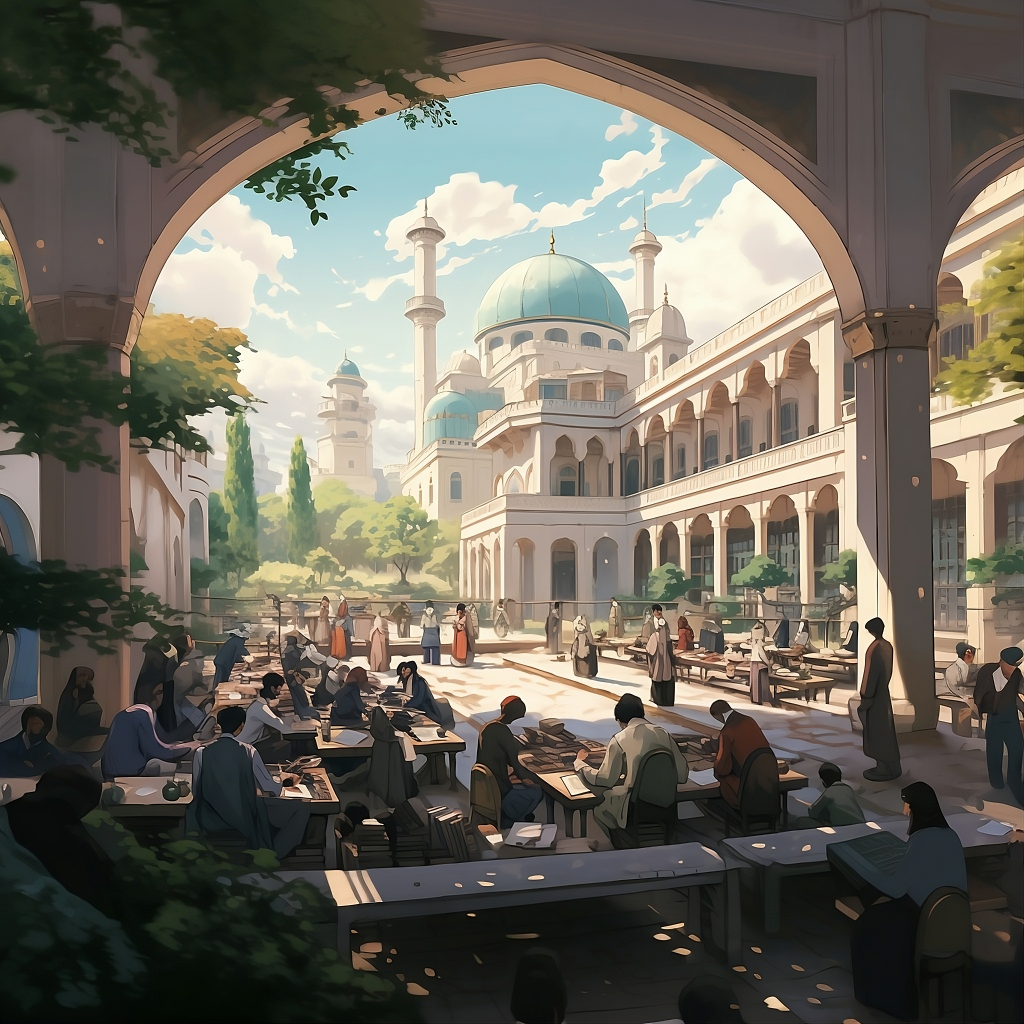
The Muslim world was the centre of enlightenment and knowledge between the 7th and 12th century. The Islamic Golden Age represented the pinnacle of scientific research, technological innovation, philosophical advancement and civilisiational progress. The contemporary world is advancing rapidly in science and technology. Whether it is the advent of artificial intelligence or blockchain technology, climate awareness or space exploration, the world is travelling at a rapid pace. The Muslim world must re-direct its energies toward research, development, education, institutions, and intellectual advancement. The Muslim world must symbolise commitment to knowledge, discovery, and enlightenment. This is the legacy of Muslim civilisation, and it must be rekindled in this age.
1 Jim Al-Khalili, The House of Wisdom How Arabic Science Saved Ancient Knowledge and Gave us the Renaissance, (The Penguin press, 2011), pg. 64-68.
2 Eamonn Gearon, The History and Achievements of the Islamic Golden Age, (The Teaching Company, 2017), pg. 4.
3 Gearon, 5.
4 Al-Khalili, 255.
5 Al-Khalili, 255-256.
6 Jonathan Lyons, The House of Wisdom How the Arabs Transformed Western Civilisation, (Bloomsbury Press, 2009), pg. 10.
7 Lyons, 10.
8 Firas Alkhateeb, Lost Islamic Islamic History Reclaiming Muslim Civilisation from the Past, (Hurst & Company, 2014), pg. 53.
9 Lyons, 100.
10 Lyons, 100-102.
11 Lyons, 118.
12 Lyons, 118.
13 Lyons, 118.
14 Lyons, 199.
15 Lyons, 199-200.
16 Alkhateeb, 60-61.
17 Alkhateeb, 60-61.
18 Alkhateeb, 60-63.
Dr. Gabor Mate, When the Body Says No The Hidden Cost of Stress, (Vermilion, 2019).
Alkhateeb, 63-64.
21 Alkhateeb, 64.
Salim T.S. Al-Hassani, 1001 Inventions The Enduring Legacy of Muslim Civilisation, (National Geographic, 2012), pg. 14.
23 Al-Khalili, 80.
24 Al-Khalili, 80.
25 Al-Hassani, 14-15.
26 Alkhateeb, 64-65.
27 Alkhateeb, 61-62.
28 Alkhateeb, 61-62.
29 Al-Khalili, 265.
30 Al-Khalili, 265.
31 Al-Khalili, 265.
32 Al-Khalili, 265.
33 Al-Khalili, 265.
34 Hamdi Khalfaoui and Hassan Guenichi, Does Islam promote growth: evidence from Arab Muslim countries and non-Arab Muslim countries, 3 August 2021, Emerald Insight, pg. 4.
35 Agung Suwandrau, Thamer Alghamdi and Nurwanto Nurwanto, Empirical Analysis on Public Expenditure for Education and Economic Growth: Evidence from Indonesia, 9 October 2021, MDPI Journal, pg. 10.
36 Suwandrau, 10.
37 Suwandrau, 6.
38 Suwandrau, 1.
39 Mehmet Mercan and Sevgi Sezer, The Effect of Education Expenditure on Economic Growth: The Case of Turkey, Social and Behavioural Science 109 (2014) 925-930, Procedia Social and Behavioural Sciences, pg. 5.
40 “Turkey: Turkey to spend USD 60 billion on R&D by 2023” TendersInfo News, 24 October 2013, Gale One Files.
41 “Nigeria: Govt to Spend 0.5% of GDP on Tech, Innovation -Minister”, 20 January 2022, allAfrica.com.
42 Mohammed Lazrak and Yahya Yechouti, Issues in Moroccan Higher Education, International Journal of English Language & Translation Studies, 18 June 2017, pg. 86.
43 “Saudi Arabia spends 5.6% of GDP on education”, 19 June 2013, Arab News, Gale OneFile.
44 “Saudi Arabia Spends 5.6% of GDP on education”.
45 Sultan Ayoub Meo, Abeer A. Al Masru, Adnan Mahmood Usmani, Almas Naeem Memon and Syed Ziauddin Zaidi, Impact of GDP, Spending on R&D, Number of Universities and Scientific Journals on Research Publications among Asian Countries, PLOS ONE, June 2013, Volume 8, Issue 6.
46 Sultan Ayoub Meo, pg. 5.
47 “Pakistan – Public spending on education as a share of GDP”, World Atlas, Knoema, https://knoema.com/atlas/Pakistan/Education-expenditure.
48 Ikram ul Haq and Muhammad Tanveer, Status of Research Productivity and Higher Education in the Members of Organisation of Islamic Cooperation (OIC), University of Nebraska – Lincoln, January 2020, pg. 1.
49 Ikram ul Haq, 1.
50 Declan Butler, The Date Gap: Statistics on Scientific Investment and Performance are lacking across the Muslim World, Islam and Science News Feature, Vol 444, 2 November 2006, pg. 26-27.
51 “Statistical Yearbook on OIC Member Countries 2022”, Orgaisation of Islamic Cooperation, Statistical, Economic and Social Research and Training Centre for Islamic Countries (SESRIC), (2023).
52 Said Shabbar, Ijtihad and Renewal, (The International Institute of Islamic Thought, 2017), pg. 130-131.
53 Said Shabbar, 130-131.
54 Said Shabbar, 130-131.